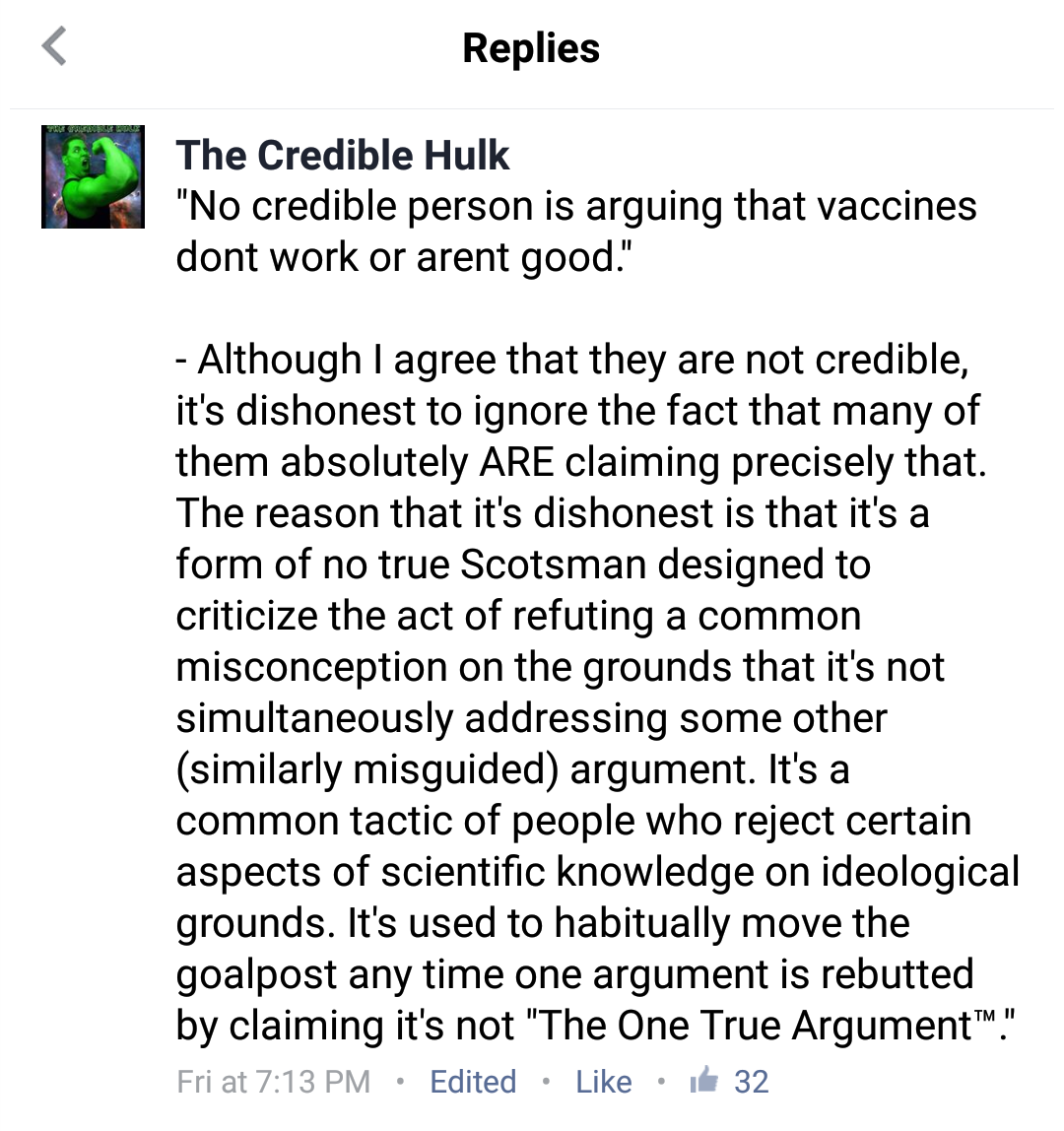Categories: ArgumentationLogical Fallacies
The One True Argument™
Anyone who has spent much time addressing a lot of myths, misconceptions, and anti-science arguments has probably had the experience of some contrarian taking issue with his or her rebuttal to some common talking point Read more…


